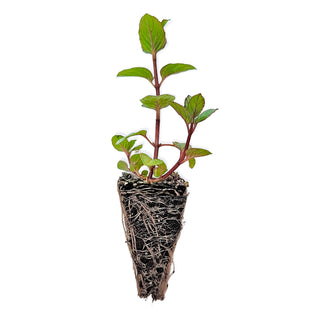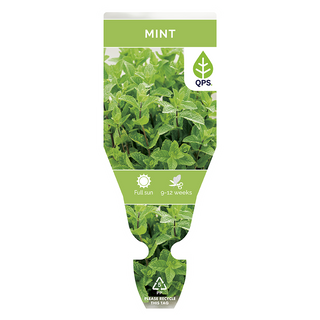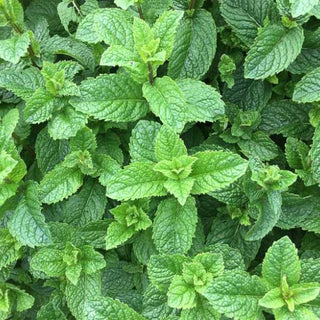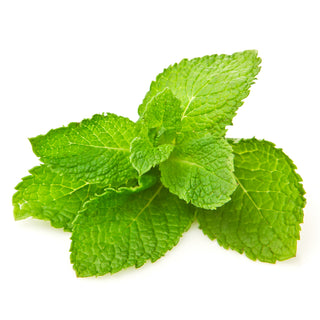Mint Seedlings
- Unit price
- / per
Mint, known for its vibrant green leaves and refreshing flavour, is a popular herb in culinary and medicinal applications. It is cherished for its unique characteristics.
Characteristics: Mint is distinguished by its bright green, serrated leaves and a refreshing, cool flavour with hints of menthol. It offers a unique and invigorating taste that is instantly recognizable.
Culinary Uses: This herb is a culinary favourite, prized for its refreshing flavour and versatility in a wide range of dishes and beverages. Mint leaves are often used to add a burst of flavour to salads, teas, cocktails, and desserts. Mint is a key ingredient in various cuisines, including Middle Eastern, Mediterranean, and Asian recipes.
🌱 Seedlings Height: When ready for transplanting or harvesting, mint seedlings typically reach a height of 15cm to 20cm, including their root system.
📏 Space plants: The recommended spacing for mint plants will be provided soon, depending on specific growing conditions.
🥗 Harvest Time: Information regarding the ideal harvest time for mint will be available soon, as it can vary based on local climate and cultivation practices.
Medicinal Uses: Mint has been used in traditional medicine for its potential digestive and soothing properties. It is often consumed as a tea to alleviate indigestion and promote relaxation.
Aromatic Herb: Mint is also known for its aromatic qualities. Its leaves release a fresh and invigorating fragrance when crushed, making it a popular choice for herbal teas and aromatherapy.
Companion Planting: Gardeners often use mint as a companion plant in gardens. It is believed to repel certain pests and attract beneficial insects, making it a valuable addition to a garden ecosystem. However, mint can be invasive, so it's often grown in containers to prevent it from spreading too aggressively in the garden.
We are a proudly Australian-owned family business dedicated to providing high-quality seedlings, seeds, fruit trees, native plants, and indoor ornamentals. We offer express shipping to SA, VIC, QLD, and NSW, with local delivery and pickups available by arrangement. Unfortunately, due to restrictions, we are unable to send to TAS, WA, or NT. For OH&S and biosecurity reasons, farm tours and direct purchases are not available, and pickups can only be made at our farm gate entrance. We deeply value our loyal customers and thank you for your continued support.
Mint Seedlings
- Unit price
- / per
Adding product to your cart
You may also like
Mint, known for its vibrant green leaves and refreshing flavour, is a popular herb in culinary and medicinal applications. It is cherished for its unique characteristics.
Characteristics: Mint is distinguished by its bright green, serrated leaves and a refreshing, cool flavour with hints of menthol. It offers a unique and invigorating taste that is instantly recognizable.
Culinary Uses: This herb is a culinary favourite, prized for its refreshing flavour and versatility in a wide range of dishes and beverages. Mint leaves are often used to add a burst of flavour to salads, teas, cocktails, and desserts. Mint is a key ingredient in various cuisines, including Middle Eastern, Mediterranean, and Asian recipes.
🌱 Seedlings Height: When ready for transplanting or harvesting, mint seedlings typically reach a height of 15cm to 20cm, including their root system.
📏 Space plants: The recommended spacing for mint plants will be provided soon, depending on specific growing conditions.
🥗 Harvest Time: Information regarding the ideal harvest time for mint will be available soon, as it can vary based on local climate and cultivation practices.
Medicinal Uses: Mint has been used in traditional medicine for its potential digestive and soothing properties. It is often consumed as a tea to alleviate indigestion and promote relaxation.
Aromatic Herb: Mint is also known for its aromatic qualities. Its leaves release a fresh and invigorating fragrance when crushed, making it a popular choice for herbal teas and aromatherapy.
Companion Planting: Gardeners often use mint as a companion plant in gardens. It is believed to repel certain pests and attract beneficial insects, making it a valuable addition to a garden ecosystem. However, mint can be invasive, so it's often grown in containers to prevent it from spreading too aggressively in the garden.
We are a proudly Australian-owned family business dedicated to providing high-quality seedlings, seeds, fruit trees, native plants, and indoor ornamentals. We offer express shipping to SA, VIC, QLD, and NSW, with local delivery and pickups available by arrangement. Unfortunately, due to restrictions, we are unable to send to TAS, WA, or NT. For OH&S and biosecurity reasons, farm tours and direct purchases are not available, and pickups can only be made at our farm gate entrance. We deeply value our loyal customers and thank you for your continued support.
You may also like
You may also like
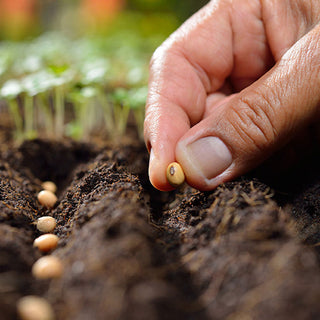
CERTIFIED ORGANIC
Commercial-grade certified organic seed boasts top-notch germination rates and yields, perfect for Aussie growers
Testimonials

QPS offers a wide selection of high-quality seedlings, including herbs, vegetables, and ornamental plants. They are known for their robust health and diverse variety, catering to all gardening preferences. With careful packaging and clear care instructions, Quality plants & seedlings ensures their plants arrive in good condition. They prioritise customer service and sustainability, making them a trusted choice for gardeners of all levels aiming to create thriving gardens.

Choosing QPS for my certified organic seeds was a game-changer for my garden. The variety of herbs, vegetables, and ornamental plants available exceeded my expectations, all grown with meticulous organic practices. The seeds arrived promptly and were clearly labeled with planting instructions, making the process smooth and stress-free. I've been impressed with the high germination rates and the healthy growth of the plants, reflecting QPS's commitment to quality. For anyone looking to start or expand an organic garden, QPS is my go-to choice for reliable, sustainable seeds.
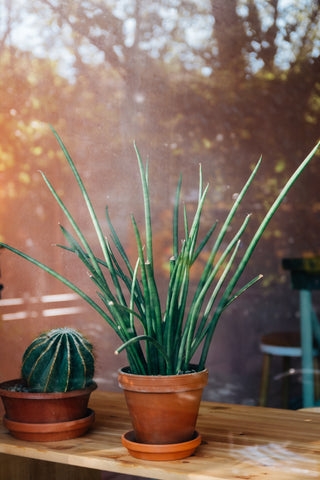
Sourcing wholesale indoor plants from QPS has been a fantastic experience for my projects as a landscape designer. Their extensive selection of indoor plants is of exceptional quality, perfect for creating vibrant interior spaces. Each plant arrives well-packaged and in excellent condition, reflecting QPS's attention to detail and commitment to customer satisfaction. Their competitive wholesale pricing makes them a preferred supplier for large-scale projects. I highly recommend Quality Plants & Seedlings to fellow professionals and enthusiasts seeking reliable, top-notch indoor plants for their designs.

Choosing QPS for seedlings at our school has been a great decision. Their diverse range includes everything from vegetables to ornamental plants, all nurtured with care using organic practices. The seedlings arrived promptly and were well-packaged with clear instructions, making them easy for students to handle and plant. We've been pleased with the robust health and rapid growth of the plants, which has enhanced our educational gardening initiatives. QPS's commitment to quality and sustainability makes them an ideal choice for schools looking to cultivate a green thumb in students.
Recommended products
We offer express postage straight to your door, servicing SA, VIC, NSW, and QLD. Click & Collect is also available—please note, no walk-ins allowed.
Our seedlings ensure seamless transplanting with minimal crop stress for optimal growth and yield.
Our Australian customers trust us for seedlings that deliver high yields and strong root growth, proven by their loyalty and repeat purchases.
We are PCI compliant by default so you can keep payment info and business data safe.

🌱 In the Garden with Christie Cooper – Aussie Green Thumb Reporter



